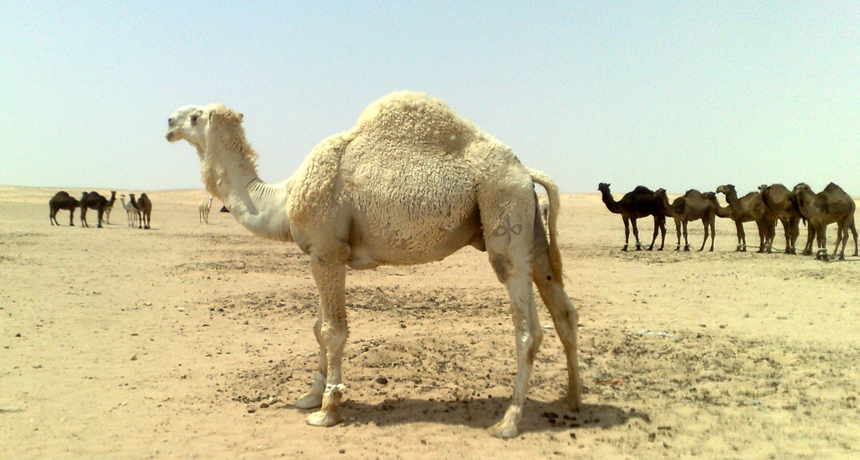Camels’ number of humps may affect their fat storage

Studying the genome of dromedary camels shows the adaptations they've developed to survive in the African desert.
The Camelid Genome Project

Studying the genome of dromedary camels shows the adaptations they've developed to survive in the African desert.
The Camelid Genome Project